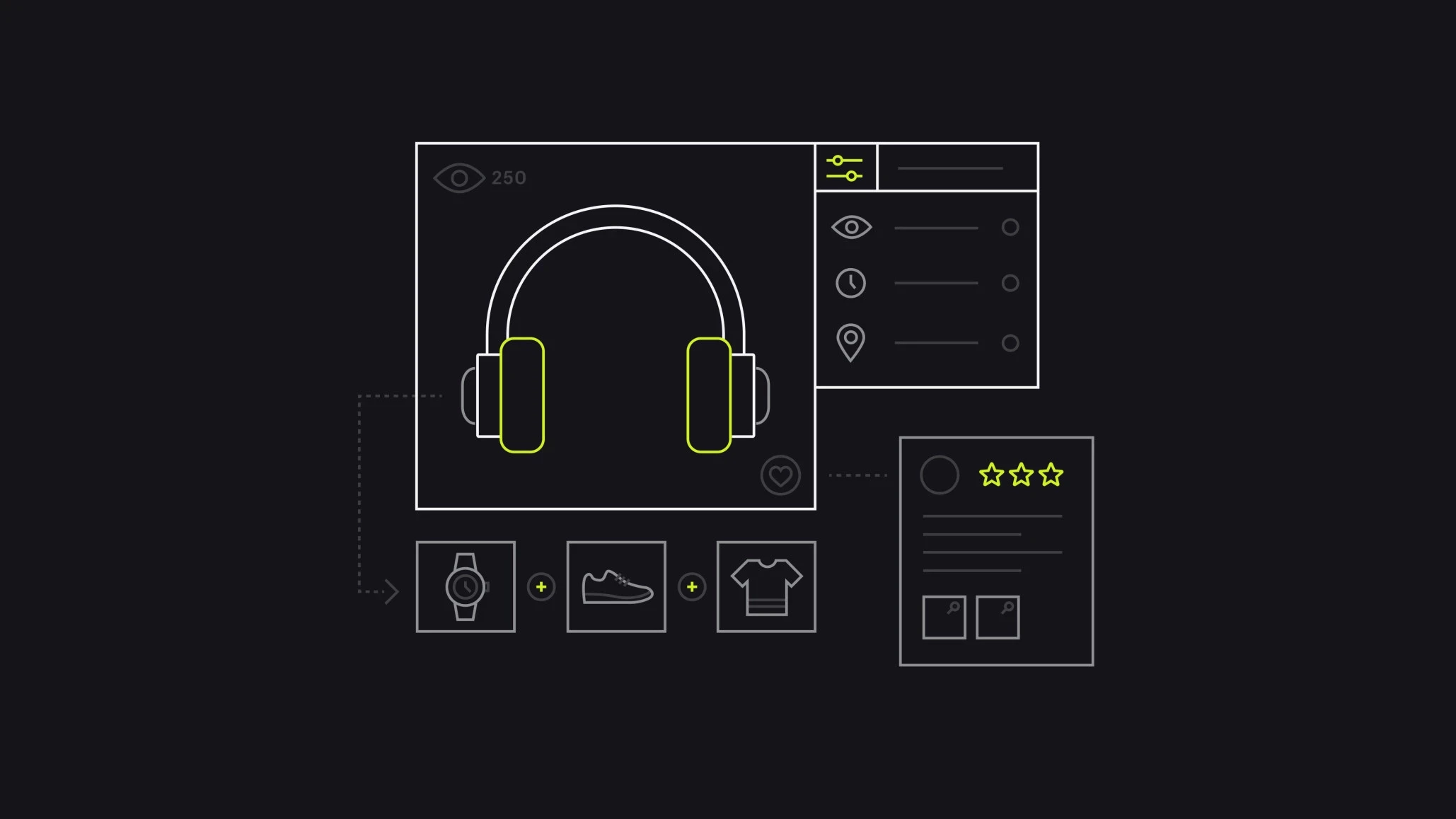In this article, we’ll examine ecommerce personalization examples proven to sell more, retain customers, and increase lifetime value. We’ll cover:
- How one brand generated 24 million personalized recommendations and an additional 1.6 million clicks on their Shopify Plus-powered site within one year
- How leveraging user-generated content throughout your funnel lifts conversions 166% on average
- How a bestsellers page—personalized by recency, popularity, or geography—can drive a 50% on-page CTR
The most successful brands capture their customers’ attention and keep them coming back, and one of the most effective ways to do this is ecommerce personalization.
Table of Contents
- What is ecommerce personalization?
- 7 Scalable ecommerce personalization tactics
- Takeaways
- Ecommerce personalization FAQ
What is ecommerce personalization?
Ecommerce personalization is the practice of tailoring the online shopping experience to the individual preferences and needs of each customer.This can include personalized product recommendations, targeted marketing messages, and customized website content based on factors such as browsing history, purchase history, and demographic information. By providing a personalized shopping experience, ecommerce businesses can increase customer engagement, improve customer loyalty, and boost sales.
Personalization programs have been shown to yield10 to 15% higher conversion rates and 20% higher customer satisfaction rates—and customer satisfaction is particularly important since businesses thatincrease their retention by a mere 5% see profit increase between 25 and 95%. That type of sustainable growth is also the cheaper option for you as a retailer, since it’s between 5 and 25% more expensive for you to get new customers than it is to retain current ones.
Of course, online personalization is easy when your SKU count and customer base are in the low-to-mid thousands.
Unfortunately, when those numbers jump into the hundreds of thousands and beyond, finding a simple yet profitable solution can be overwhelming.
7 scalable ecommerce personalization tactics
Here are ecommerce personalization examples organized around seven tactics that won’t break at scale.
- Leverage intelligent product-detail page recommendations
- Show continuous shopping for returning customers
- Create personalized bestseller lists to drive click-throughs
- Integrate user-generated content across your funnel
- Retarget in-session based on behavioral triggers
- Time social retargeting with smart recommendations
- Automate three personalized messaging types
1. Leverage intelligent product-detail page recommendations
Product-detail page (PDP) recommendations show shoppers similar or complementary products to the ones they’re already interested in. You can leverage dynamic upselling by recommending items higher in price but similar in style or by brand. Even with higher margins they're proven to convert the best.
Cross-selling on PDPs makes it easier to recommend complementary items and inspire online shoppers to increase their cart size. In this example,Urbanararecommends relevant home accessories similar to items in their shoppers’ carts.
Merchant spotlight: Personalizing product recommendations
Pura Vidawas the first to leverageYotpofor customer reviews and Nosto for personalization. They created two recommendation categories on their product pages:
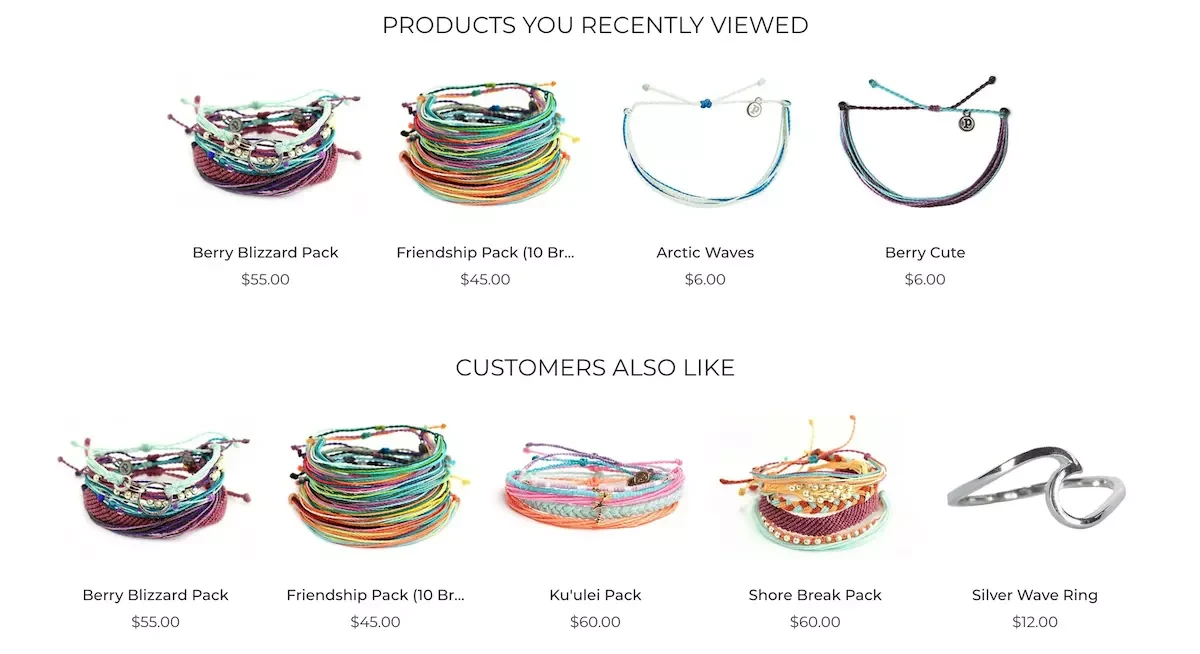
Within the first year, this combination generated:
- 24 million recommendations and an additional 1.6 million clicks
- 7.9% average recommendation conversion rate
- More than 10% of overall revenue through Nosto’s integration with Shopify Plus
Griffin Thall, cofounder ofPura Vida Bracelets, uses the Nosto integration with Shopify Plus and believes, “Shopify Plus has truly allowed us to sync our operations with vendors, apps and tech partners, as well as provide amazing reporting.”
The most effective PDP recommendations allow shoppers to jump to associated complementary categories. For example, when a shopper onBandier’ssite views a tank top, they’re also shown recommendations of matching shoes and pants.
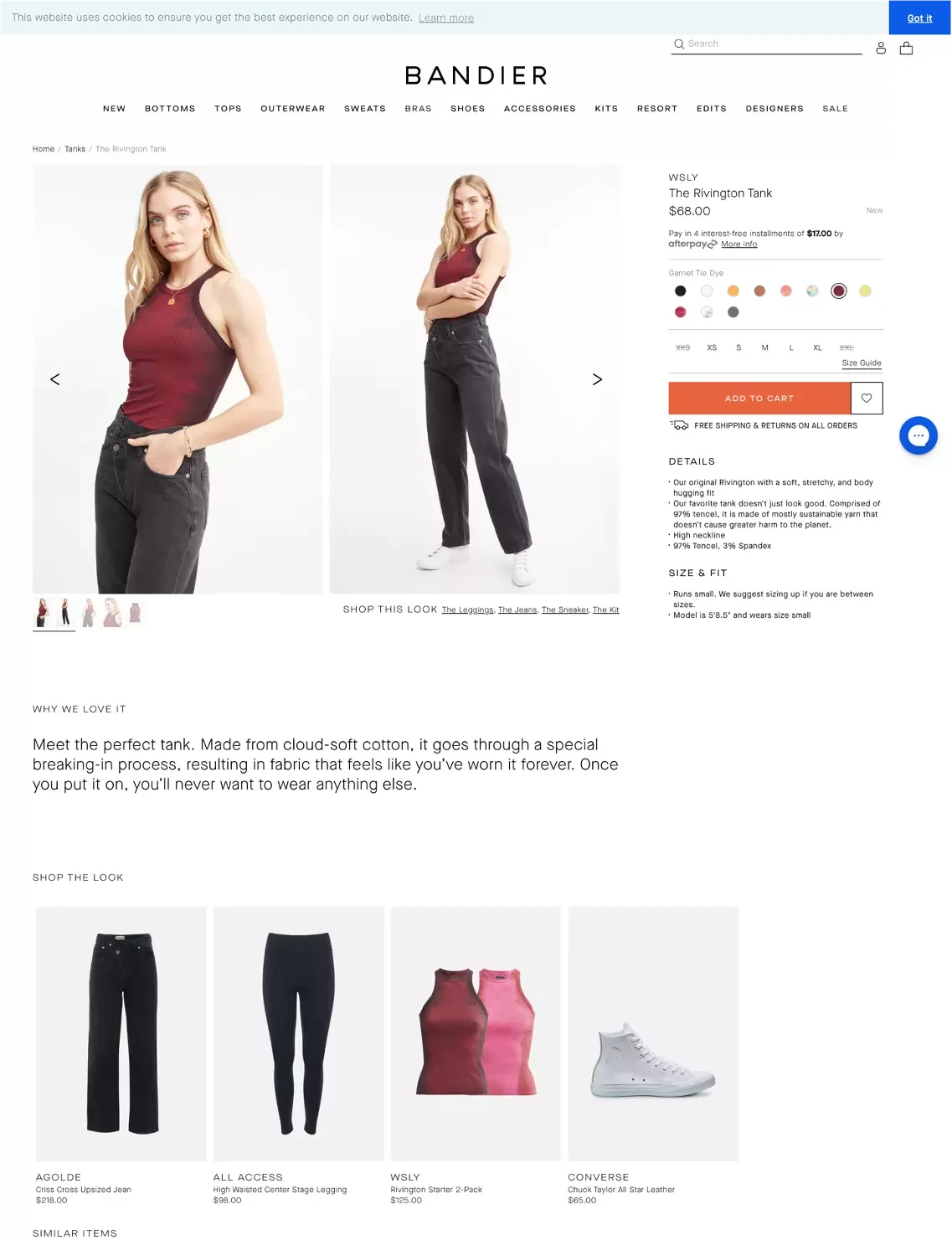
类似于连续购物,浏览历史on the PDP also makes it easy to return to previously viewed items. PDP recommendations improve the shopping experience for customers and is proven to increase conversion rates and average order value.
2. Show continuous shopping for returning customers
Netflix's “continue watching” feature is a powerful engagement tactic. Applying that to ecommerce experience, continuous shopping recommendations was born. For high-growth retailers, it's a value-add.
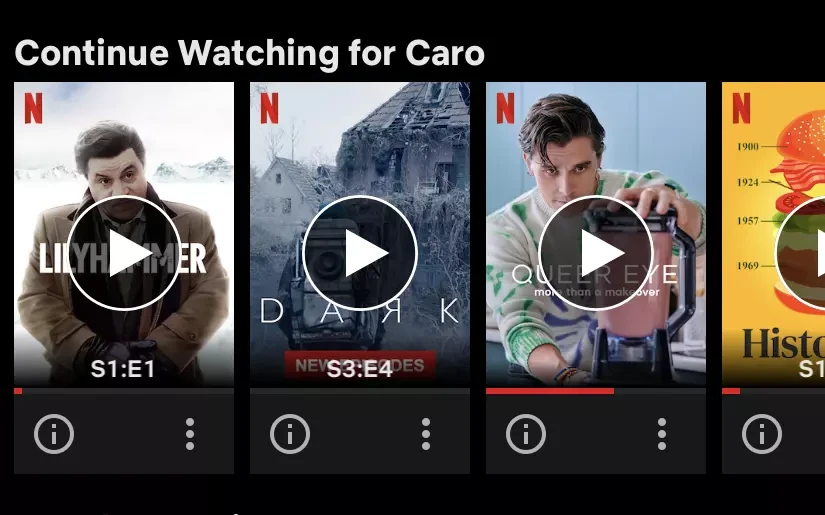
With Netflix, instead of manually searching and scanning through videos, you can pick up right where you left off with a click.
Similarly, continuous shopping recommendations remembers your visitor’s selected items and preferences through previous sessions. Website visitors can pick up right where they left off. So, it's easier for your visitors to buy when they're ready without having to search again.
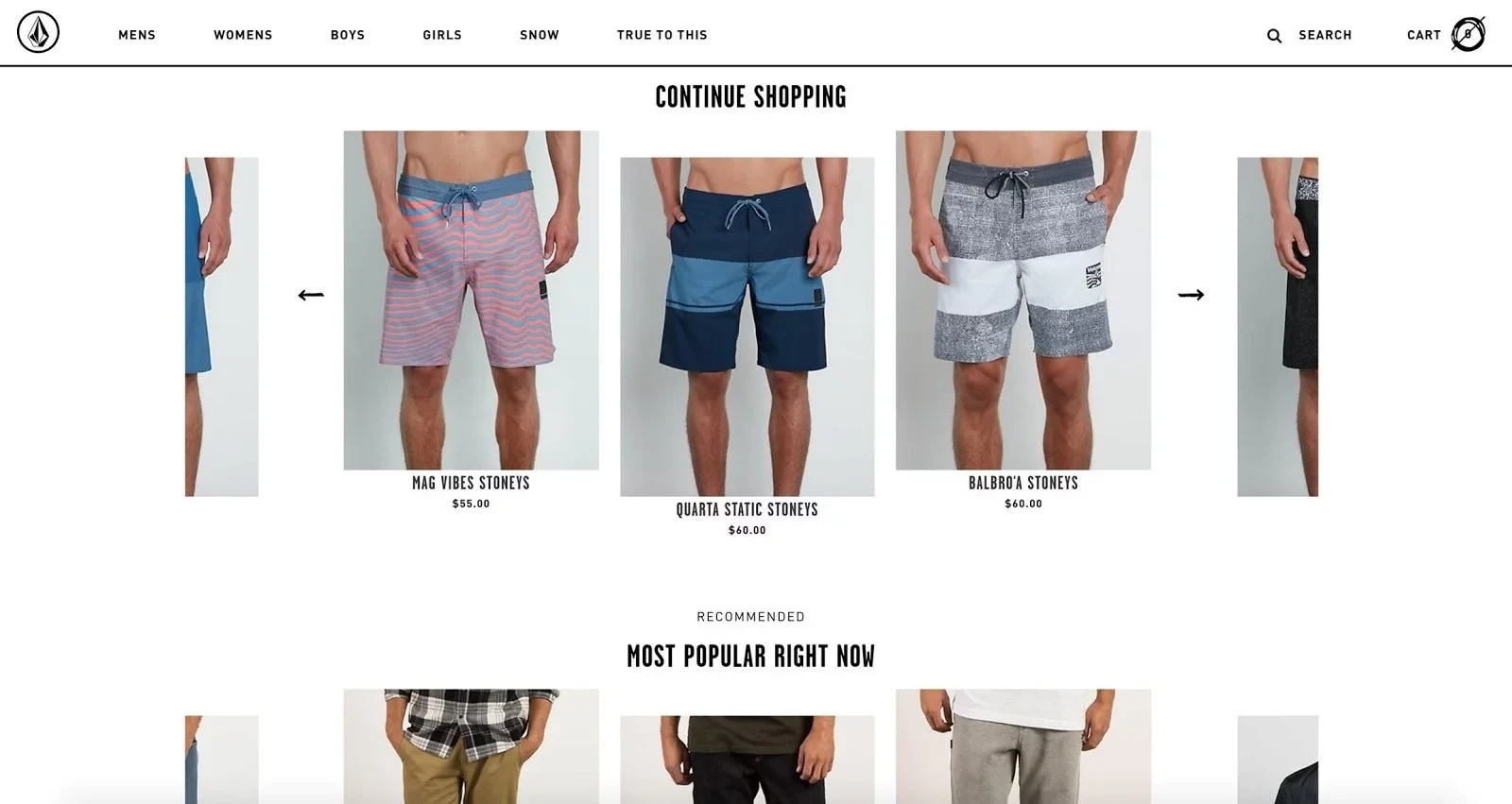
3. Create personalized bestseller lists to drive click-throughs
People are drawn to popular products—think of the magic of the New York Times bestseller book list. To shake things up, you can highlight your bestsellers using the dimension oftime. Highlight those in-demand products from over the last 24 hours, or even the past hour, depending on your website's traffic.
Campus Proteinused this tactic and the brand sawa 50% click-through rate from the best seller page to product pageswhichdoubled the brand's conversions year over year.
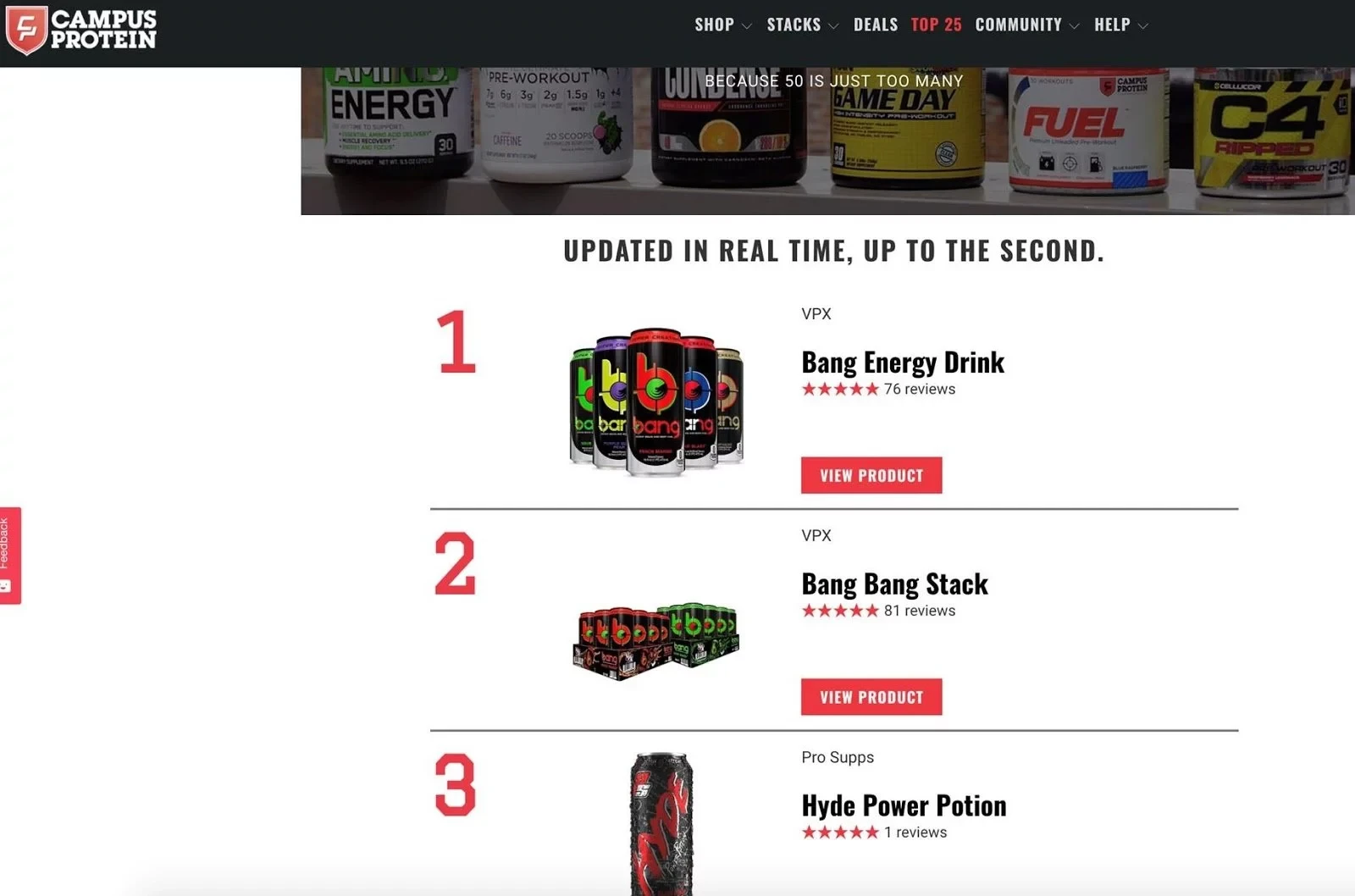
You can definitely get creative with this approach: instead of ranking products by sales, try displaying the most reviewed or segment by location. Showing best sellers by location can be powerful if you sell fashion in multiple climates or if your store specializes in sports team gear. Your customers from Los Angeles probably aren’t shopping for the same clothing in winter as your shoppers from New York City are. Find what works best for your unique products and customers.
For years,LeSportsacprimarily sold their “deluxe” products which are inherently elegant and minimal in design. However, when looking at their Google Analytics data, they noticed a large subset of their traffic comes from Hong Kong, where bolder designs and color schemes tend to resonate more with consumers.
By leveraging recommendations labeled asTrending Sellers By Location, they were able to expose a completely unique set of products to their Hong Kong clientele instead of the ones LeSportsac had sold to their US customers:

4. Integrate user-generated content across your funnel
User-generated content (UGC)can bring another dimension to your site. By posting photos, videos, and reviews from customers, visitors get the chance to see your product in real life.
And consumers are just as receptive to making peer-based decisions. In the US alone,54% of consumerssay they learn about new and interesting products from friends and acquaintances. Fortunately, withShopify Flow, it’s possible to easilyintegrate all of your tech toolsto create seamless, inspiring experiences.
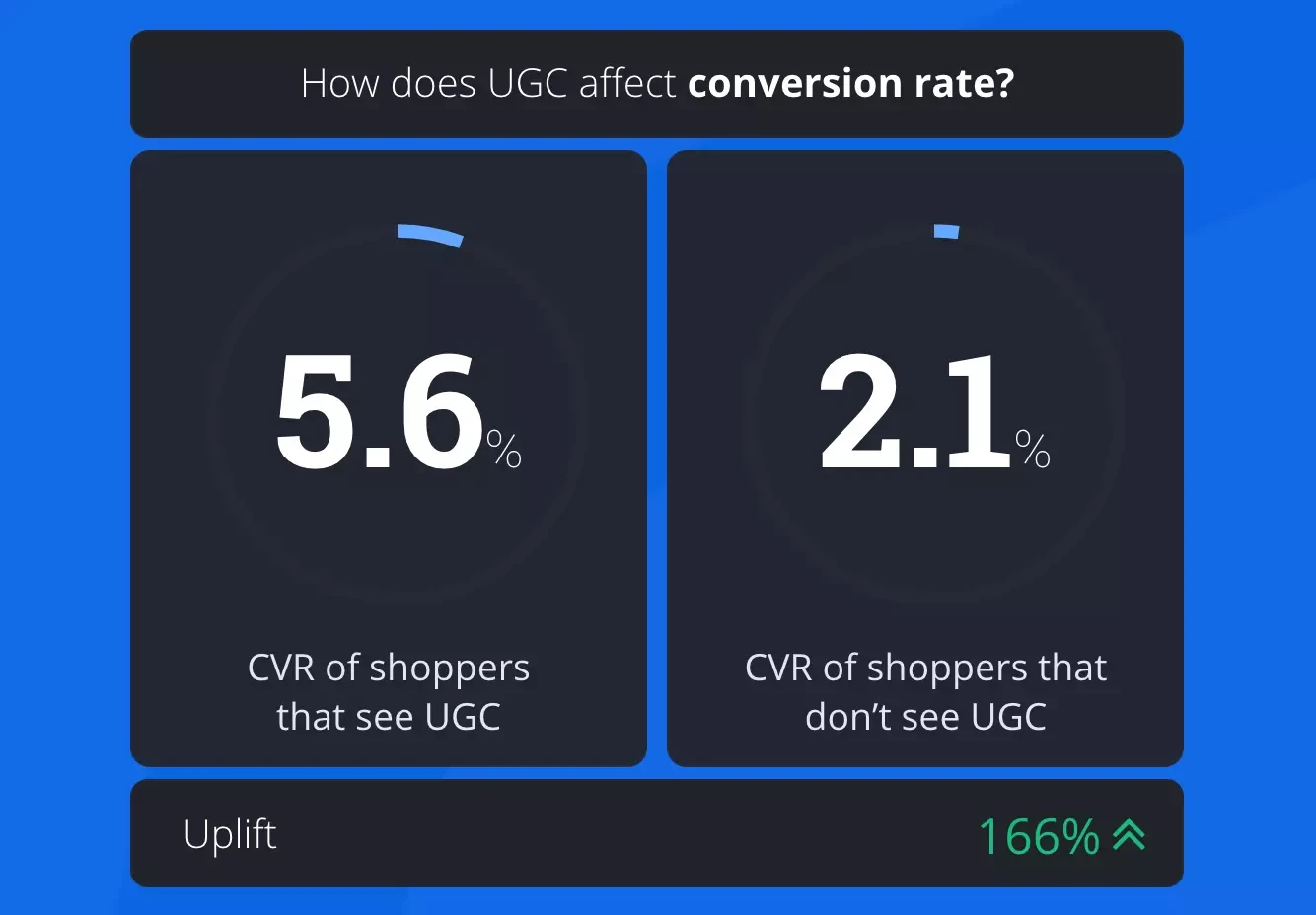
Unfortunately, most businesses stop short of integrating UGC throughout their onsite funnel, limiting its use to rating on product pages or shares on social media.
What are top brands doing instead?
SeaVeesmakes UGC (collected from Instagram) prominent on their homepage and PDPs by linking directly to a curated collection of shoppable posts, many of which are submitted by customers through SeaVees branded hashtag:
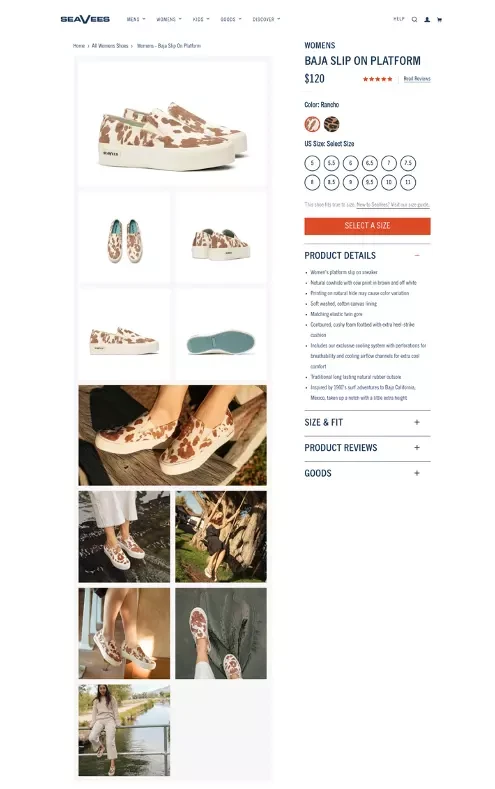
Similar to Seavees’s use of UGC, Skinnydip London displays Instagram images on their homepage from their loyal shoppers with aShop the Gramheadline:
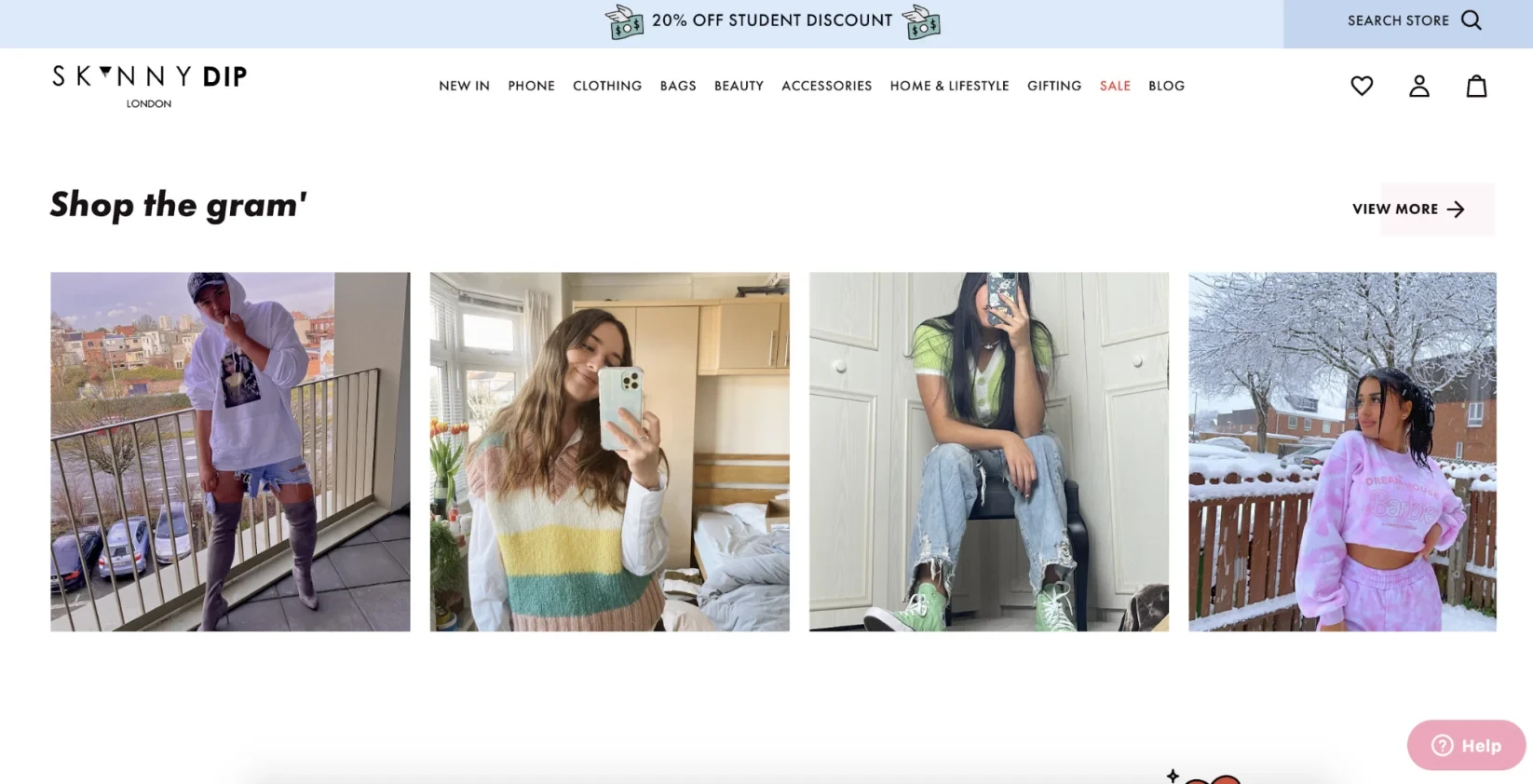
Campus Protein doubles up on UGC and customer advocacy with some of their high-demand products. For example, on the PDP promoting Bang Energy Drink, they first display a carousel of Instagram-inspired UGC under the product image:
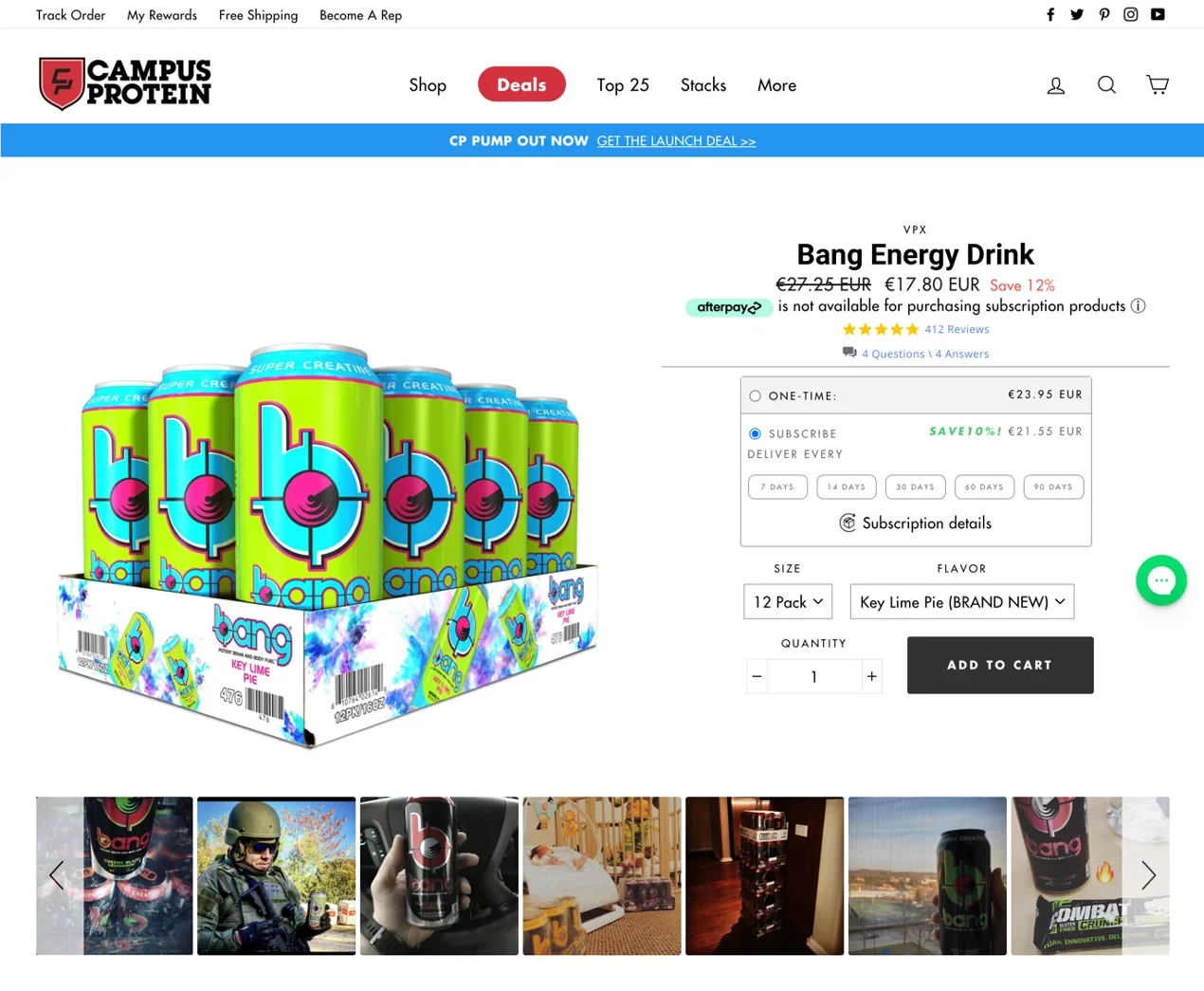
As you scroll further down the page, you’ll also find a video that features a spin on the traditional product review:
5. Retarget in-session based on behavioral triggers
Off-site retargeting can be expensive. Thankfully, on-site interstitials is an alternative. The key is to be intuitive, not intrusive, with your popups.
You can do this by timing or triggering popup offers to match each visitor’s in-session behavior. Trigger these pop-ups through automation based on characteristics like number of sessions, cart value, and browsing behavior (both historical and real time).

It’s a good idea to offer first-time visitors exclusive discounts and promotions in exchange for their email addresses, like in the example below fromUrbanara. Once someone adds items to their cart, you can offer tiered discounts to drive upaverage order value (AOV).
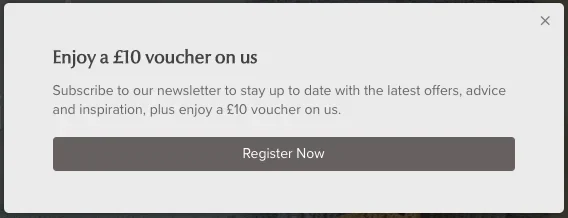
True Vintage uses an interesting alternative to discounts across the board—free shipping with a pricing threshold. In this example, the brand offers free shipping for all UK orders over £150:
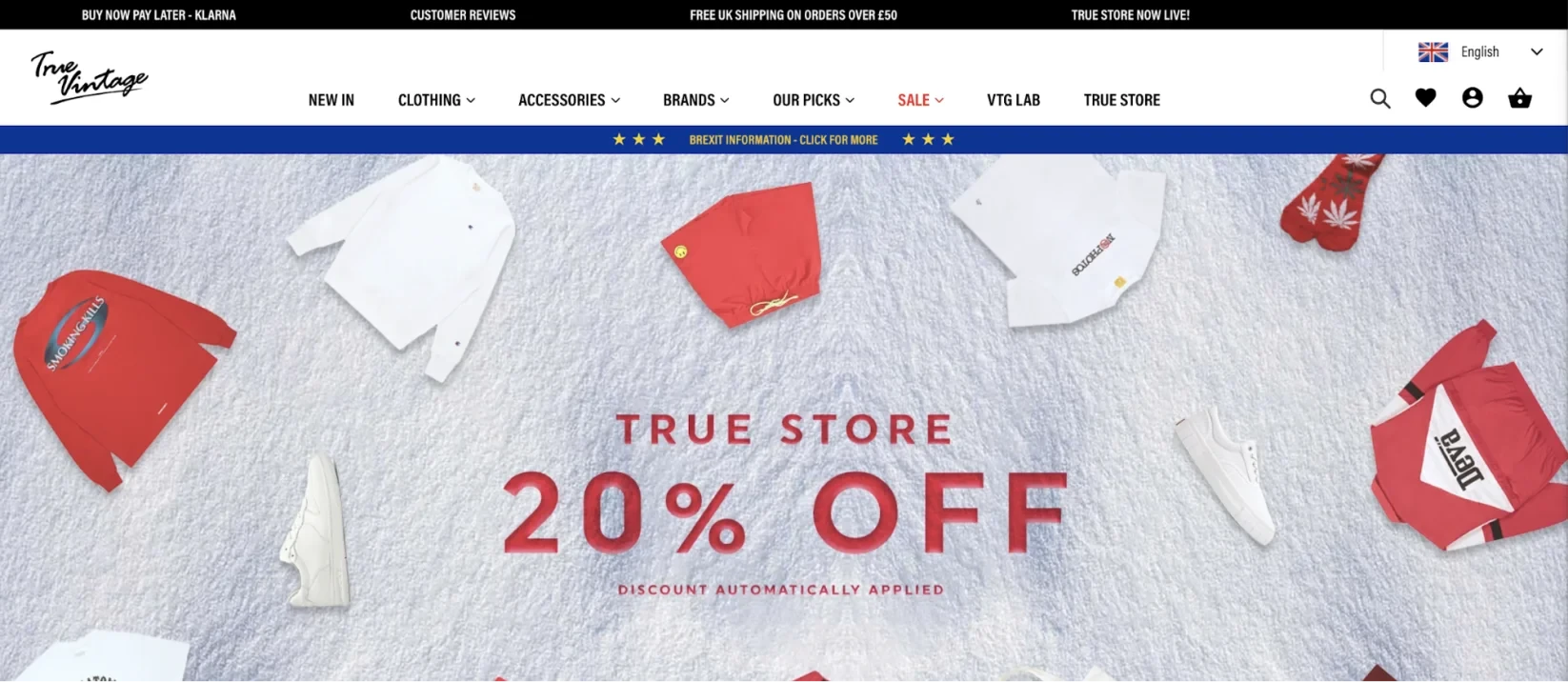
Another great popup option is to reengage returning visitors with reminders of what they’ve browsed (but never purchased) in order to drive them towards checkout. Bandier deploys a popup for returning visitors that displays recommendations based on previous browsing behavior:
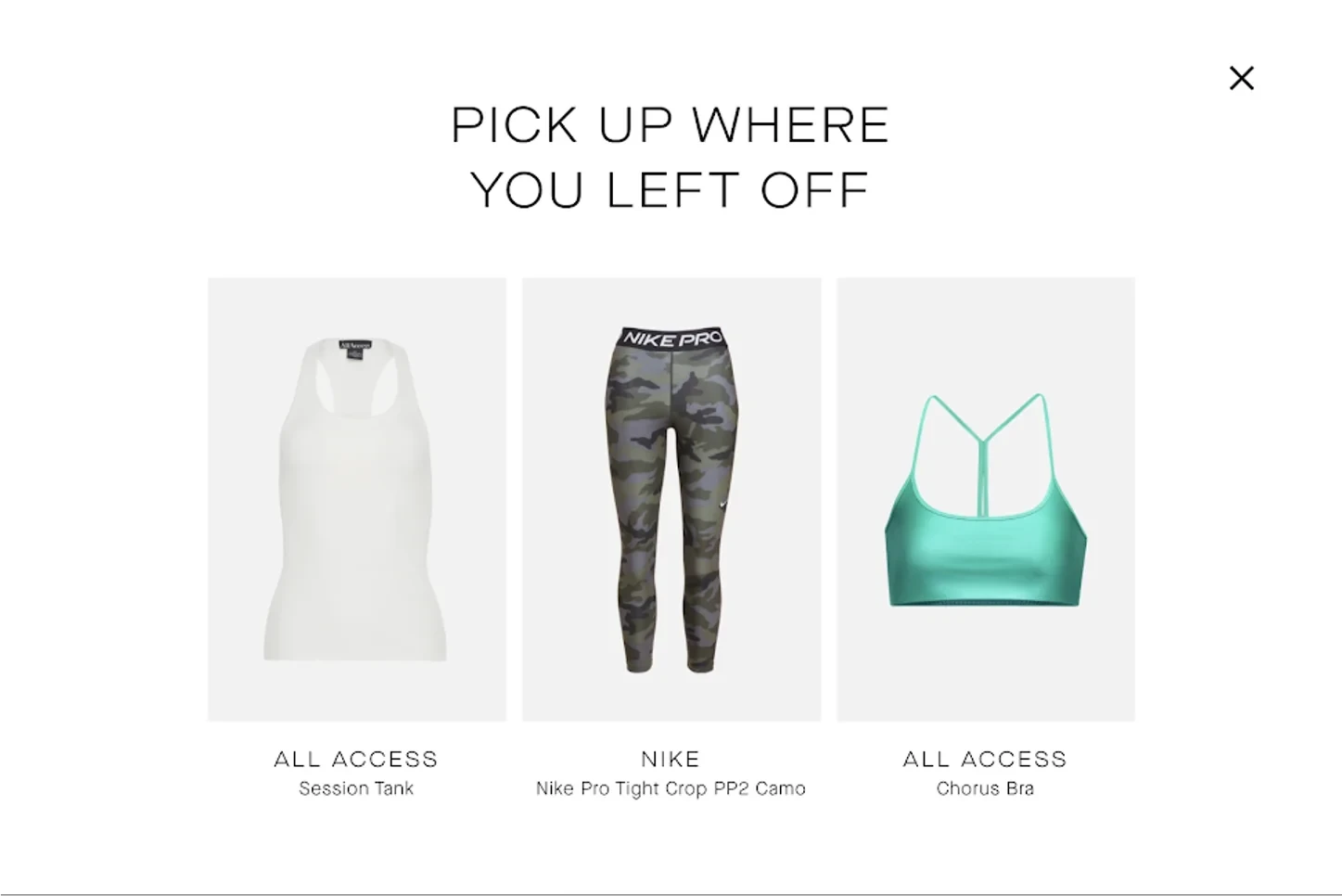
6. Time social retargeting with smart recommendations
Even if a visitor leaves your site, there are ways to get their attention back through retargeting on social media. To make this approach successful, you need to choose your timing wisely.
One of the more advanced forms of retargeting is granulated retargeting. The value of a site visitor declines the longer they’ve been away from your site, so you can save a lot on ad spend by layering your retargeting as their value declines. You can also shorten your retargeting period to 7 to 14 days so you’re engaging customers when they’re most likely to still convert.
同样重要的是要注意你proaching these shoppers: whether it’s with products relevant to their previous purchases or simply by reminding them of your unique selling proposition.
Byusing an AI-powered tool, you can retarget shoppers at just the right time to avoid having them forget about you or buying from a competitor.
One fun way of staying in front of your shoppers is by combining your retargeting ad with a boosted video to remind your customers why they should buy from you rather than a competing brand—a tactic Chubbies deploys:
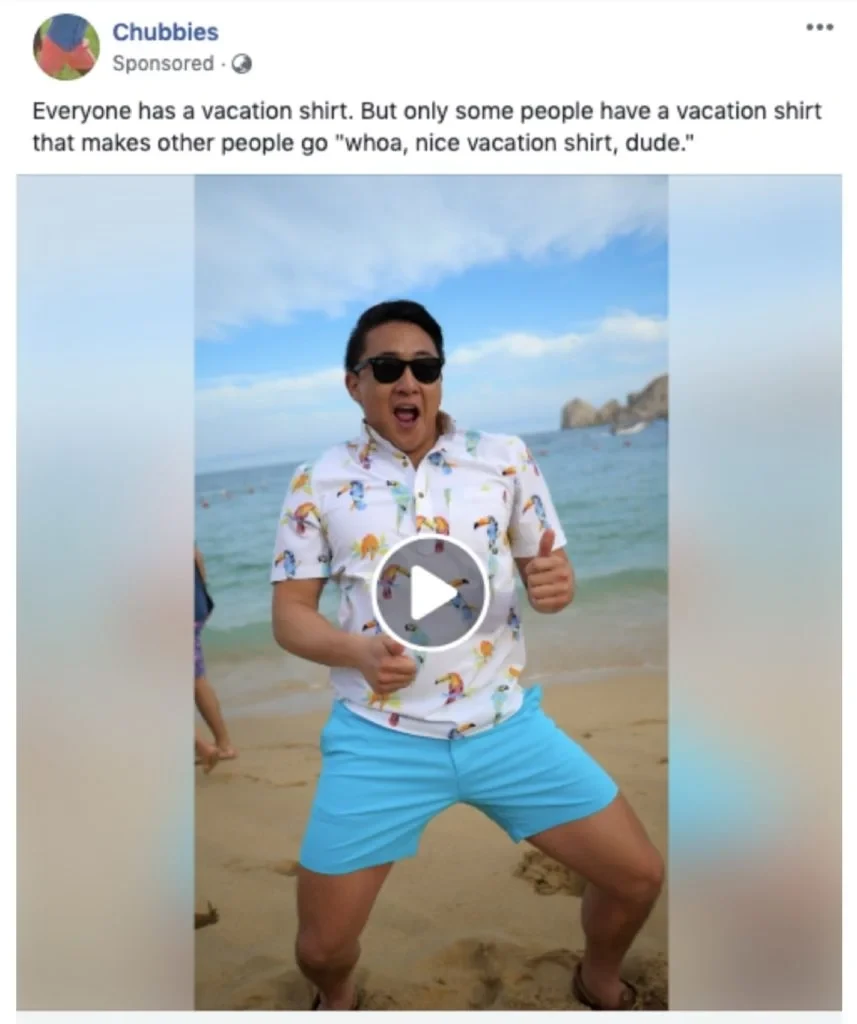
7. Automate three personalized email and SMS types
If an online shoppershares their email address or mobile number with you, your brand has another way toengage and convertthem. By continuously engaging customers, you can reach out no matter where your customers are, which keeps your company top of mind.
So let’s delve into three messaging techniques that get their attention:
1. Abandoned cart messaging
Optimizing your checkout experience is a necessary step toreducing abandoned carts, but you’ll never eliminate them altogether. For example, many shoppers get distracted and leave ecommerce sites with items still in their cart.
When this happens, you can jog their memory with an abandoned cart email. Morvélo sends customers an email containing items they left in their cart to encourage them to come back and finish the purchase.
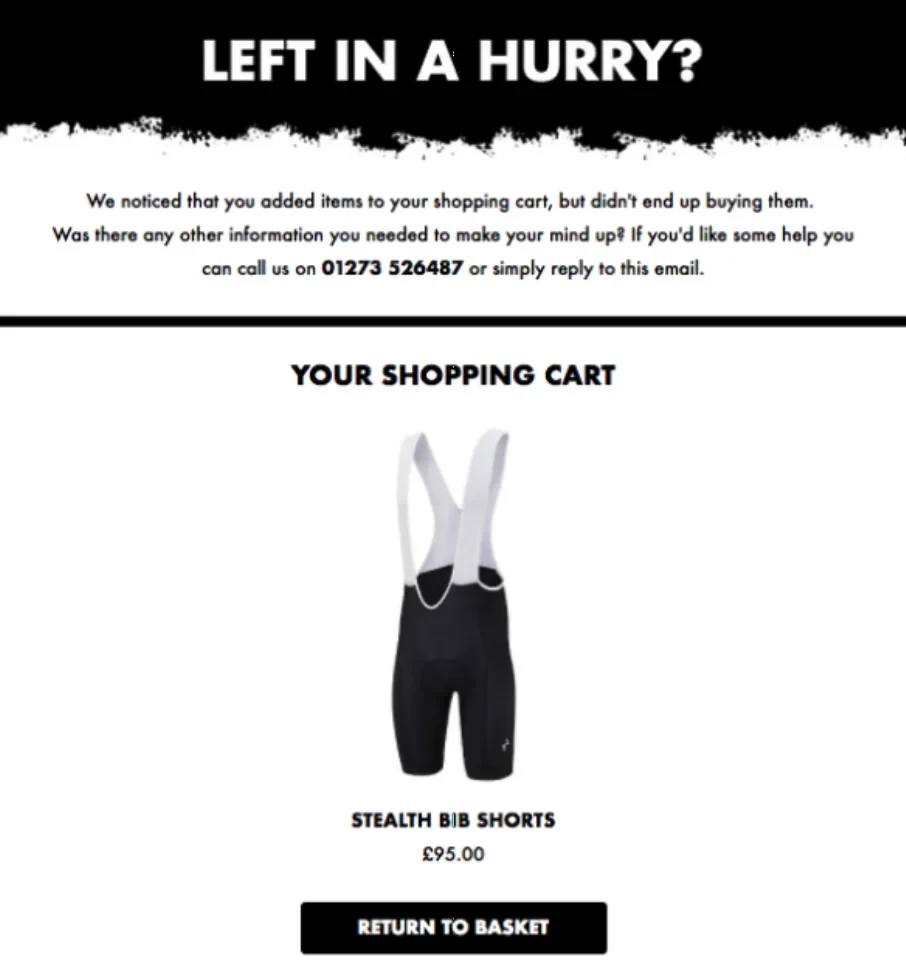
You can also use this as a way to catch visitor’s attention. For example, Dope displays a pop up after a visitor adds an item to their cart:
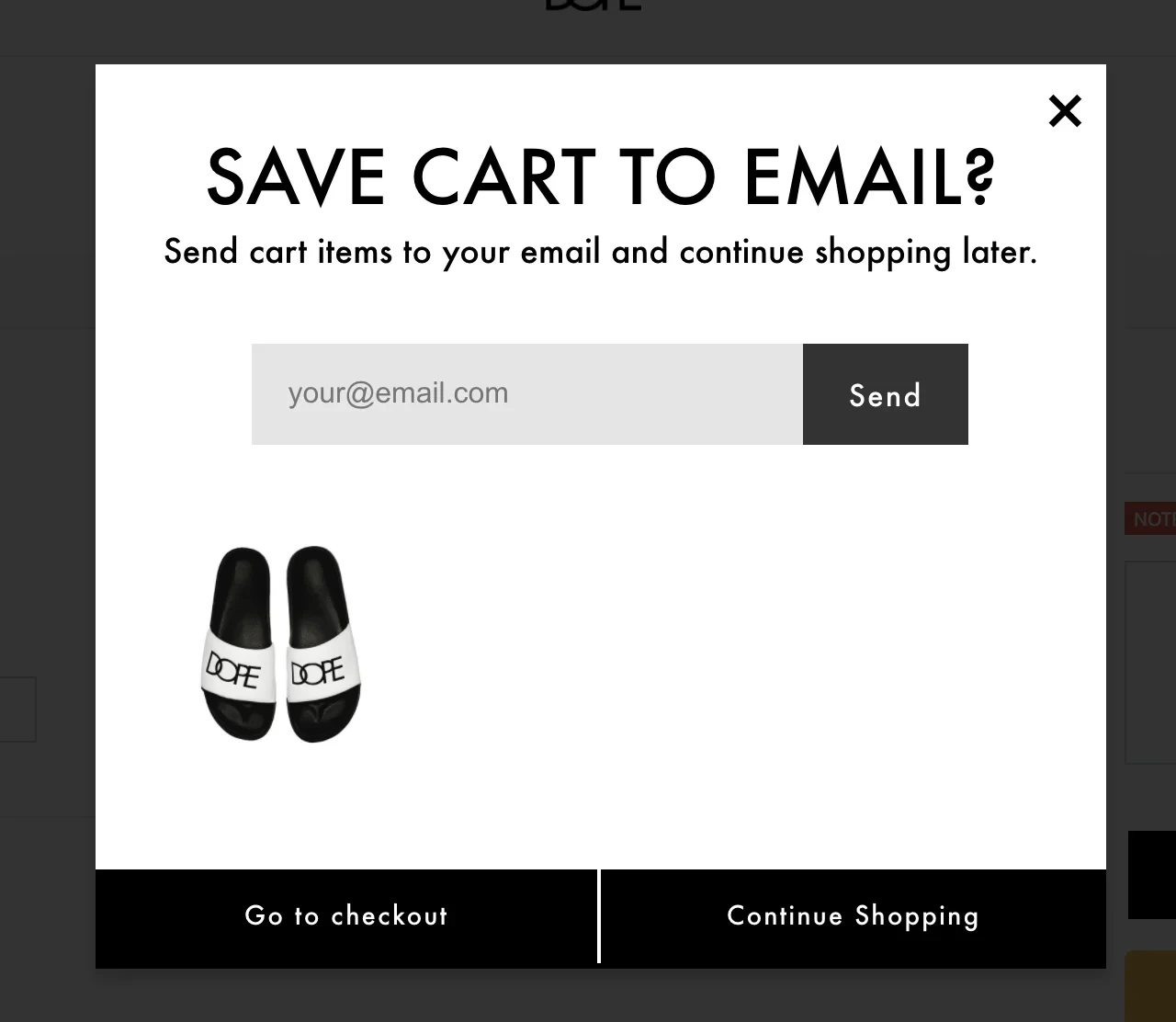
2. “We miss you” messaging
If a shopper forgets about their cart, you can nudge them with a kind email. Supporters Place sends emails to re-engage visitors and announce new, exciting, products to remind the visitor of what they’d looked at in the past.
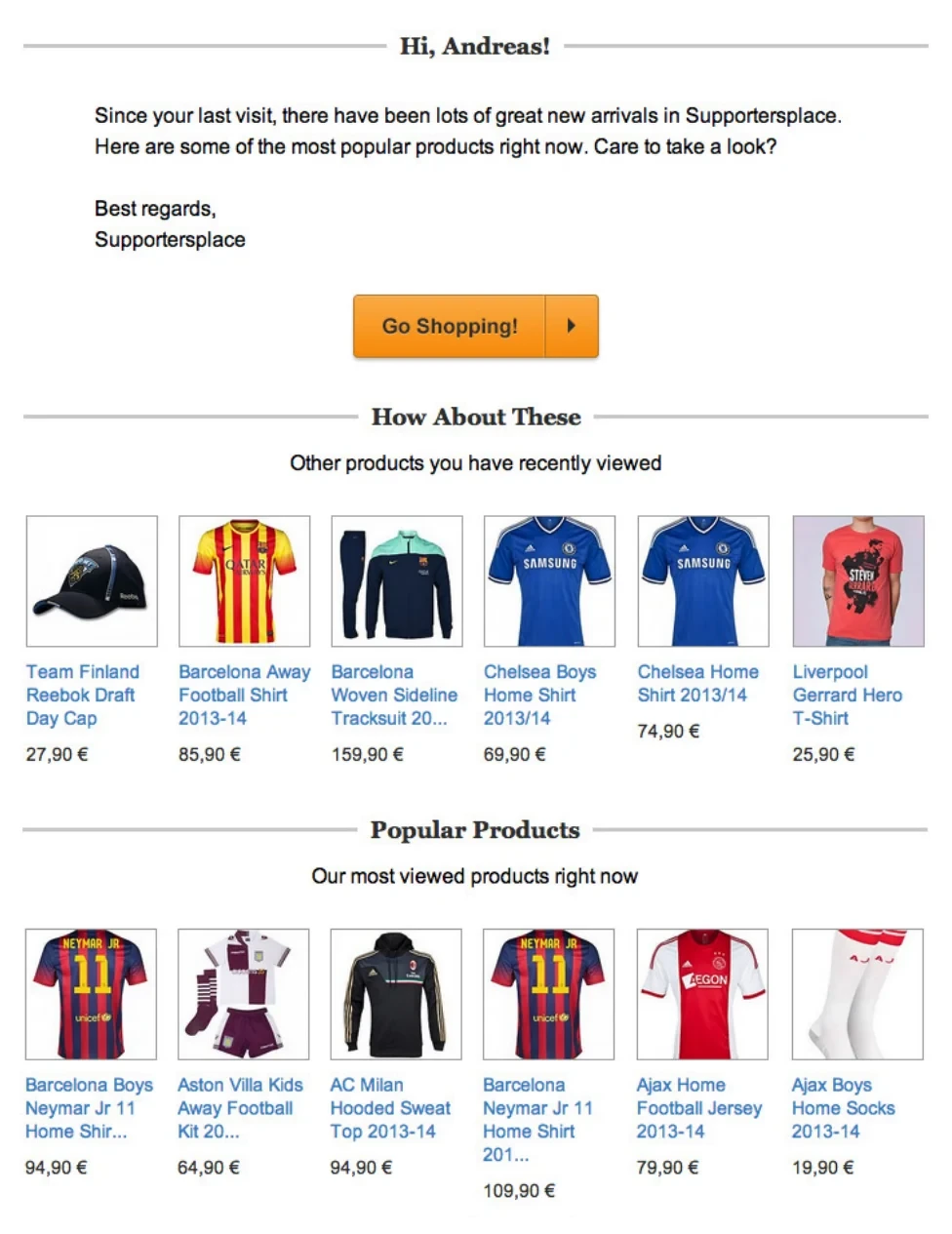
3. Order follow-up messaging
The checkout is just thebeginning of your relationship with a buyer. Check in with buyers after purchase and provide customized product recommendations based on their previous orders. Here’s howergoPouchdoes it:
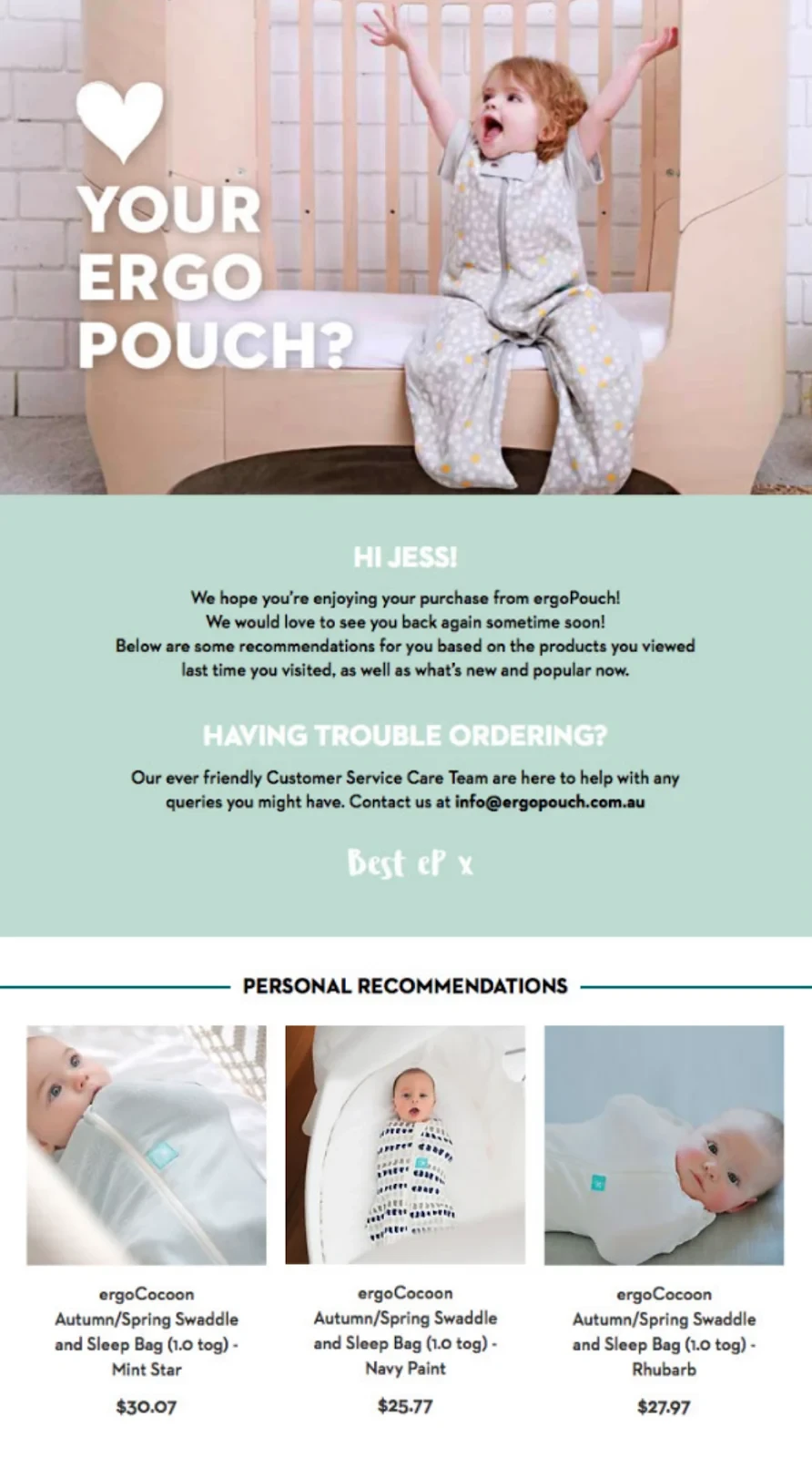
Learn more:10 omnichannel examples
Takeaways
Personalization sets your brand apart from others and creates a relationship between your business and your customers. Shopify PlusCertified AppsandService Partnershelp brands build experiences that build customer engagement resulting in a sustainable, successful future for your business.
Ecommerce Personalization FAQ
What are the 4 R's of personalization?
- Relevance: Making sure that the content delivered to the user is relevant to their needs.
- Recognition: Remembering user preferences and behaviors in order to deliver personalized content.
- Responsiveness: Providing timely, relevant content that is tailored to the user's needs.
- Results: Measuring the effectiveness of personalization efforts and adjusting strategies to maximize user engagement.
How important is personalization in eCommerce?
Personalization is incredibly important in eCommerce. Consumers today expect personalized experiences across all digital touchpoints, from product recommendations to tailored content to customized product offers. Personalization helps to improve the user experience, increase engagement, and ultimately, drive sales. It can help eCommerce businesses build customer loyalty, increase customer satisfaction, and develop a competitive advantage.
What is personalization and customization in e-commerce?
Personalization and customization in e-commerce are the processes of customizing a user’s experience by delivering content that is tailored to their individual needs, interests, and preferences. This could include personalized recommendations for products, tailored ads, and tailored content. Personalization can help to make a customer’s shopping experience more efficient, as they are presented with the most relevant products and content. Customization, on the other hand, involves allowing customers to customize their product or service to their own specific needs and preferences. Examples of customization include customizing a product size, color, or function, or selecting from a range of options to create a unique product.
What are examples of personalized marketing in eCommerce?
- Targeted Email Campaigns: Sending emails to customers that are tailored to their interests and needs.
- Personalized Product Recommendations: Using customer data to make product recommendations that are tailored to each customer.
- Social Media Engagement: Engaging with customers on social media and responding to their questions, comments, and feedback.
- Customized Content: Creating content that is tailored to individual customers and their interests.
- Loyalty Programs: Offering loyalty programs that reward customers for their loyalty and engagement.
- Dynamic Pricing: Adjusting prices based on customer behavior.
How do I personalize my ecommerce website?
Here are some tips on how to personalize an ecommerce website:
- Use Customer Data: Use customer data to tailor personalized experiences. Track customer behaviors, demographics, location, previous purchases, search history, and other data points to create personalized shopping experiences.
- Personalized Recommendations: Offer product recommendations based on the customer's interests and activities. This can be done using AI algorithms to suggest products that are related to the customer's past purchases or browsing history.
- Customized Content: Create customized content for different segments of your audience. For example, if you have a segment of customers who are interested in fashion, create a blog or video series with fashion tips and trends.
- Personalized Marketing: Use personalized marketing messages, such as personalized emails and special offers, to engage with your customers.
- Loyalty Programs: Create personalized loyalty programs that reward customers for their loyalty and encourage repeat purchases.
- Customer Service: Provide personalized customer service by addressing customers by name and offering personalized solutions to their problems.
- User Interface: Design a user-friendly interface that is customized to fit the preferences of your customers. Customize the layout, colors, and fonts to match their preferences.
- Real-Time Assistance: Offer real-time assistance through live chat or chatbots to enhance the shopping experience.
- Personalized Packaging: Create customized packaging for customers to enhance the overall experience.
- Reviews and Ratings: Encourage customers to leave personalized reviews and ratings to give feedback and help others make informed purchase decisions.
Read More
- Why Pop-up Shops Are the Future of Physical Retail
- Conversion Rate Optimization: What Everyone Gets Wrong and How to Do It Right
- The 1 Rule for Building a Billion-Dollar Business
- Back-to-School Ecommerce: Infographic & Lessons from $58.1B in Online Sales
- How You Can Profit from Personalizing Content on Your Ecommerce Store
- Top Omnichannel Logistics and Supply Chain Challenges in Ecommerce
- 你的访客在想什么之前Click “Add to Cart"
- 品牌忠诚度在电子商务:为什么以及如何Communities Are Key to Long-Term, Multi-Million Dollar Success
- 11 Ecommerce Checkout Best Practices: Improve the Checkout Experience and Increase Conversions
- What 1-Click Checkout Can Do for Your Small Business
